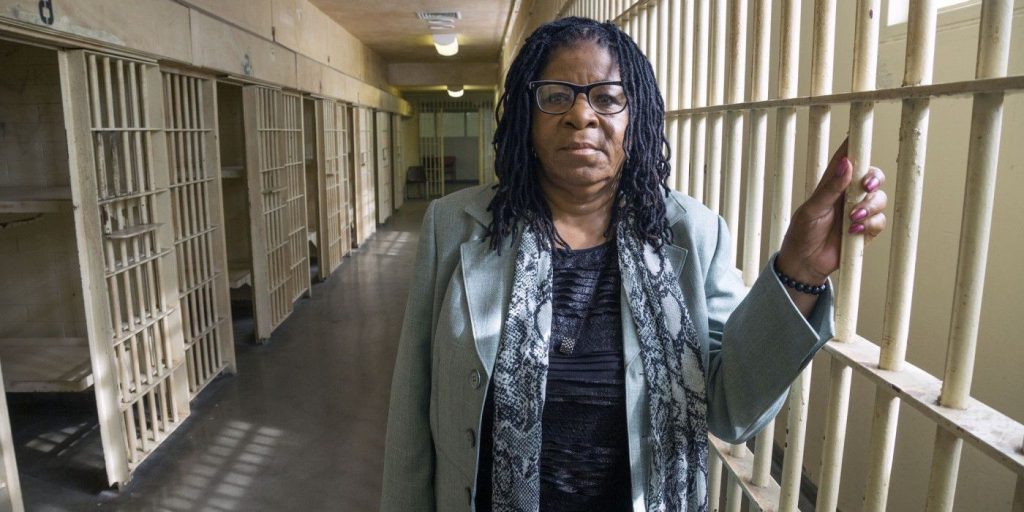Los Angeles native Susan Burton spent twenty years in and out of prison, after the death of her five year old son K.K. broke her. The last time she was released, a guard told her, “You’ll be back.”
Burton said he was wrong, but inside she feared it was possible. “I prayed that I won’t spend all my life caged and chained up.”
She got a job, kept it, saved money, eventually bought a house. Her prayers were answered.
And then she did something amazing.
“I would go to down to the bus station, and wait for women [released from prison] to get off the bus. And I’d say, “Hey girl, I’ve got a house. And if you want somewhere to come and live, you can have a bed there.” Within weeks of putting in bunk beds for ten guests, her house was full.
That was 1997. Since then, Burton’s dream has turned into a series of homes, other services, and a project, A New Way of Life, that has provided shelter and support for over one thousand women in South Central Los Angeles.
Burton’s story isn’t in the news right now. It isn’t the subject of some new movie or TV show (though clearly it could be).
While Burton’s project has deservedly received attention over the years, what brings her amazing story to new attention right now is not the mainstream media, but of all things, Starbucks.
Last week, Starbucks launched its first web series, “Upstanders”, ten documentary shorts about ordinary Americans who have done things to help make the world a better place. Alongside the story of Burton and A New Way of Life are the stories of two college students in Iowa who have come up with an Uber-type approach to help connect food pantries and restaurants; a female sheriff in Washington State who developed a police training regimen based around communication, compassion and the Constitution that has become the state’s standard; Baldwin, Michigan, a poor rural town whose citizens have together made the incredible commitment of giving every student who graduates from Baldwin High School $5000 a year for college tuition; and others.
Starbucks CEO Howard Schultz conceived the series with Rajiv Chandrasekaran, former senior editor at the Washington Post, as an antidote to the cynicism and hopelessness infecting our current discourse. “We’ve asked ourselves what is the role and responsibility of a public company,” says Schultz, “and, as citizens, how we can catalyze hope in a time when we need more optimism, empathy, compassion and leadership.”
Towards that goal Schultz and Chandrasekaran have made a point to cast their nets as broadly as possible. In just ten short films “Upstanders” offers stories about wounded veterans, people with autism, both urban and rural young people, believers of different faith traditions, and hit on topics ranging from addiction and policing to chronic homelessness, life after prison and pollution.
At the same time, “Upstanders” never feels agenda-laden or political. A few stories read a bit standard, the kind of non-profit sales pitches we often hear, but in general the series is deeply compelling, four-to-five minute stories of inspiring women and men.
The ideas behind the project are also intriguing for the Church. On a landscape in which more and more major websites seems to be trying to find its way into becoming the next Netflix, Starbucks is the first to take the next leap, trying to turn its 17 million Starbucks app users into a legitimate audience. Whether the particular experiment of “Upstanders” works, it seems like a savvy long-term idea for the company. And it’s a move dioceses and individual parishes could also take up, even just by posting videos on Facebook or Instagram that tell stories of the people in their communities.
Schultz’s goals likewise resonate. Rather than a tool to sell more coffee (if that is even possible), Schultz wants “Upstanders” to inspire others to be a social force for good. The motto of the series, presented at the start of each episode, is “We all have a choice to stand by or stand up.” And watching the episodes really sells that point; the people profiled are not celebrities or millionaires; they have no special advantages. They’re just ordinary people who wondered about the kinds of issues we’re used to thinking of as intractable, and tried something.
In the end the series begs the kind of question we as Church invite as well: If others can make a difference in their communities, why shouldn’t I try, too?

